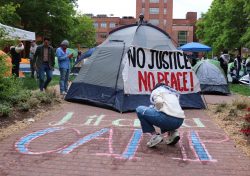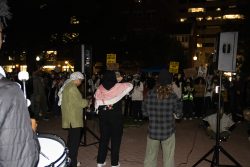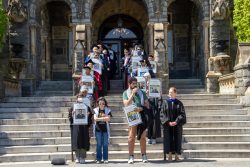Last week, Washington Metropolitan Area Transit Authority (WMATA) released a broad-reaching, ambitious strategic plan to modernize and renovate the Metro system over the next several decades. Dubbed Momentum, the 49-page plan aims to address the major strains that have plagued the system for the past several years by widening accessibility, improving physical conditions of trains and stations, and easing congestion.
The plan is a much needed step in revamping an outdated and stressed transit system, especially in the fast-growing D.C. metro area.
In a press release, WMATA stated it must “ensure the long-term competitiveness of the national capital region and keep pace with the demand from expected population growth.”
The plan includes a proposal to build a new alignment of the Blue Line from Rosslyn that will run under the Potomac to Georgetown and extend under M St. to reach Thomas Circle. The tunnel would separate the Blue and Orange Lines to greatly help alleviate congestion and capacity problems at Rosslyn and bring an unprecedented subway stop to Georgetown.
The plan also has provisions for the development of multiple streetcar routes over the Potomac, as a support for the subway. In the short-term, Rosslyn is already at train capacity according to WMATA spokesperson Dan Stessel, and will become even more of a bottleneck once the Silver Line opens next year, which is in the long term, “definitely driving our desire to get other ways to get across the river,” Stessel said.
The lack of a Metro station in Georgetown has long been a barrier to accessibility and a cause for complaint from students and neighborhood residents. “We currently live on a transit island,” said ANC2E Commissioner Peter Prindiville (SFS ‘14). “Georgetown needs a Metro station and I will support plans to build one.”
However, the project could be contentious with some residents of the neighborhood. Similar ideas have been proposed before but all faced opposition for a variety of reasons, including socio-racial concerns. Although fellow Commissioner Craig Cassey Jr. (COL ’15) called such concerns “not legitimate,” he pointed out other potential reasons for concern, such as disruption from construction and increased pedestrian traffic on “already crowded streets,” especially M St. Cassey also admitted that “there’s a little charm to being in Georgetown and being removed [from the city].”
Nevertheless, the plan has had a positive initial reception. Stessel said technology has evolved significantly and construction will use options less disruptive when compared to the cut and cover techniques used to build the downtown tunnel sections. “Everyone I have heard from with a reaction to the tunnel story has been very positive about the possibility of a Georgetown metro station as part of the plan,” said ANC Commissioner Tom Birch, whose district the proposed tunnel would partially run through.
Despite optimism from many officials, it’s still too early for excitement about a new Metro stop. The Georgetown-Rosslyn tunnel and cross-Potomac light-rail networks are targeted to be completed only by 2040, and Stessel clarified that these expansions were only presented as “concepts” contingent on further public outreach.
Furthermore, Metro board members brought up concerns about funding ambiguities, bringing to question the feasibility of the massive expansions.
The Georgetown-Rosslyn-Thomas Circle tunnel is projected to cost $3.3 billion, streetcar connections across the Potomac are projected to cost $200 million, and Momentum may altogether rack up expenses of up to $24 billion. Unlike other transit systems, Metro is funded by a combination of the District, Virginia, Maryland, and the national government, and it is unclear how the costs would be distributed. If fiscal concerns remain an issue, all plans may be delayed and 2040 projects may be shelved in favor of completing more immediate plans for 2025.
Birch said the combined government shareholders have met funding challenges before and they should be able to do it again. But if not, although it would be worth it to have a Metro stop, Cassey would not be devastated. “Georgetown students have always found a way around,” he said.





If the local residents of Georgetown did not want the metro I wonder how feasible it would be to have the stop on the Georgetown campus.